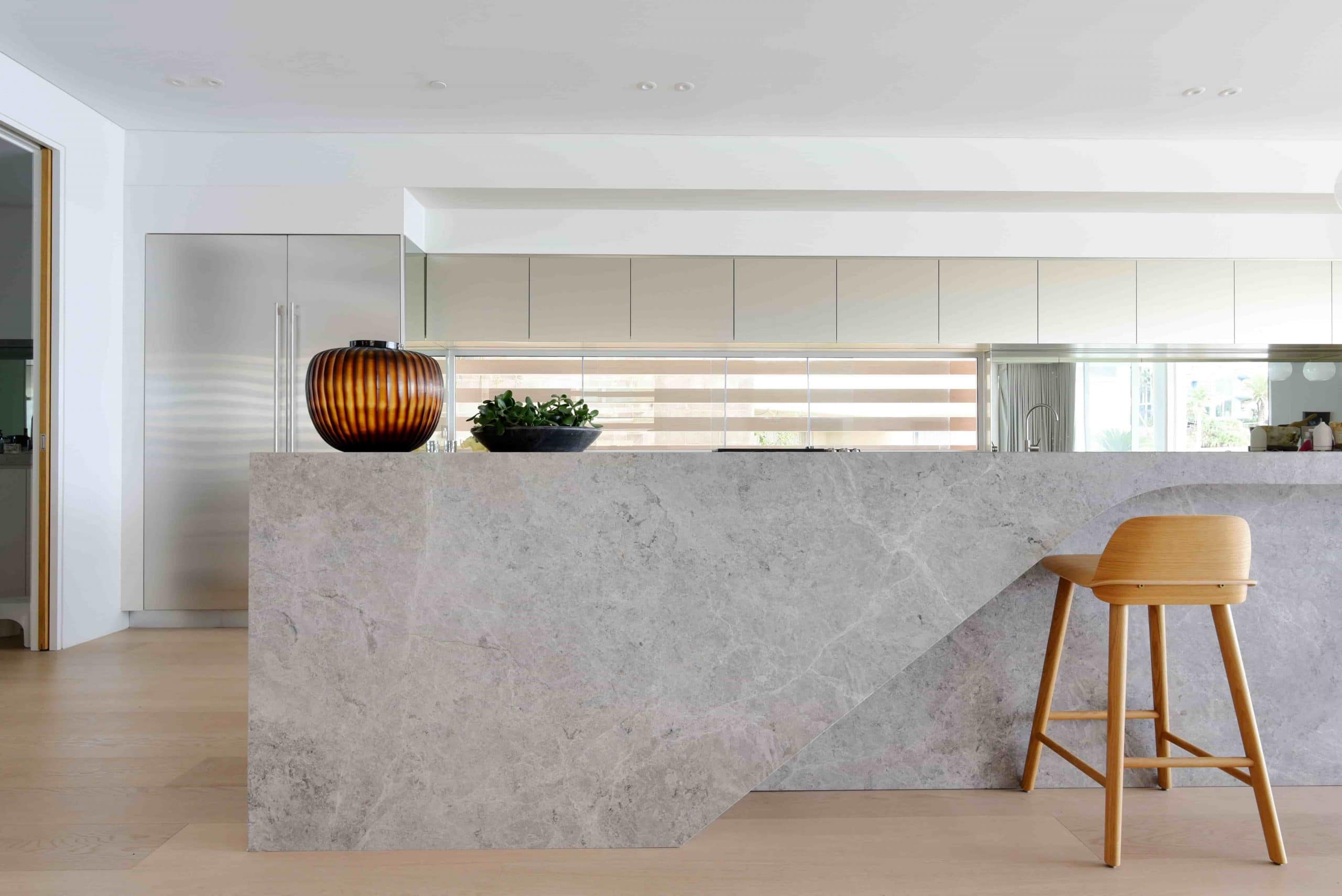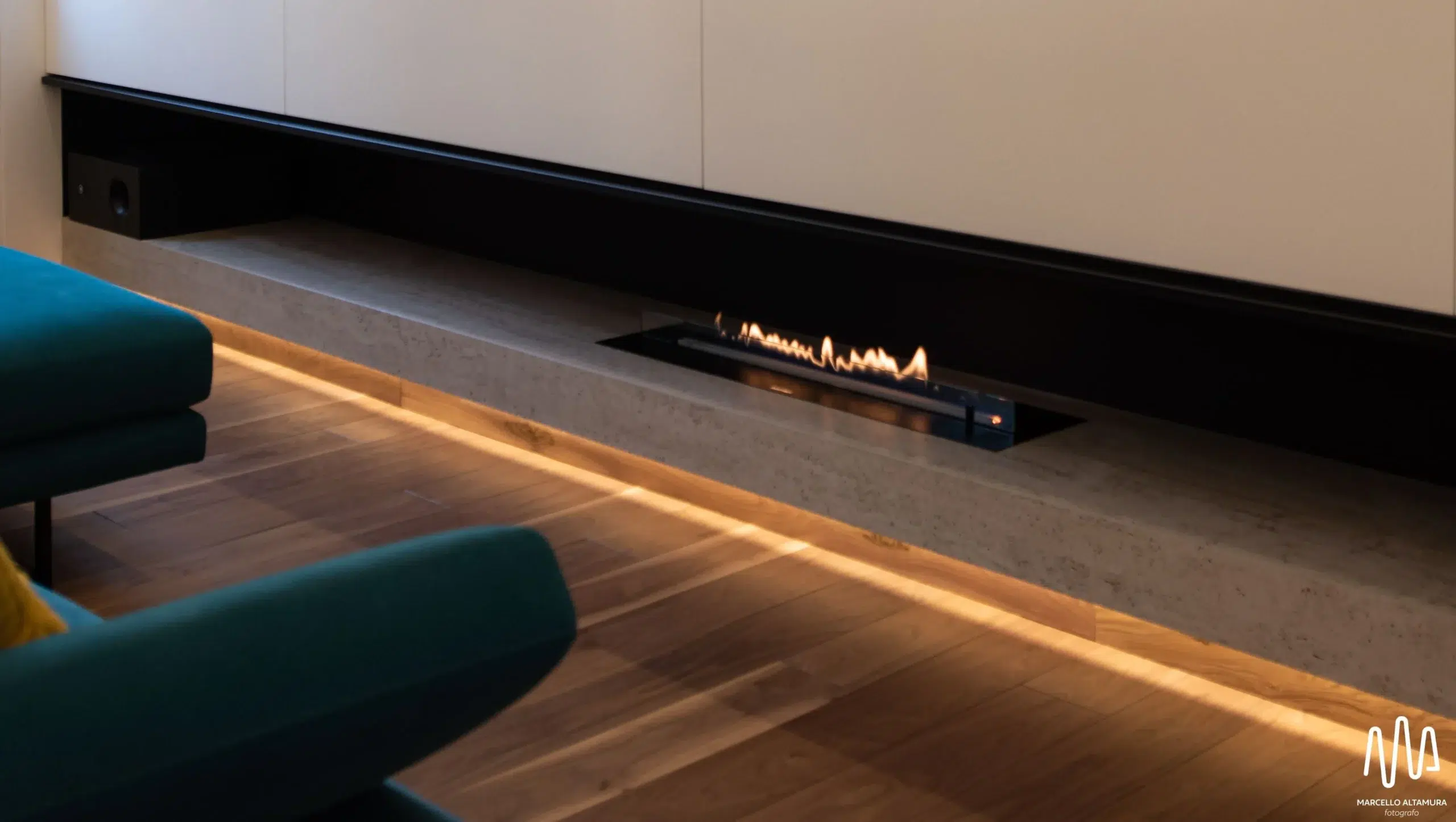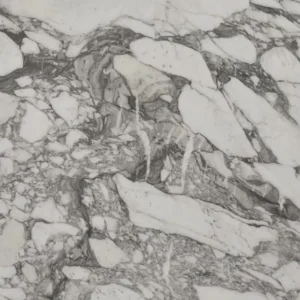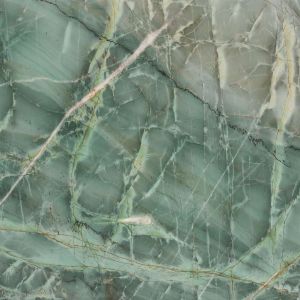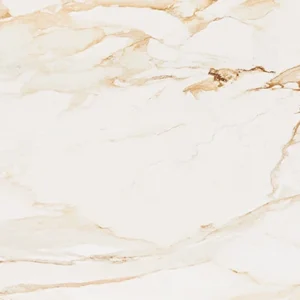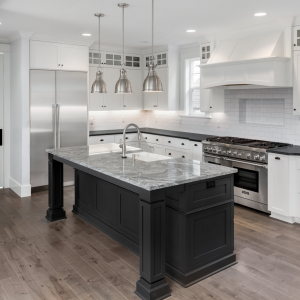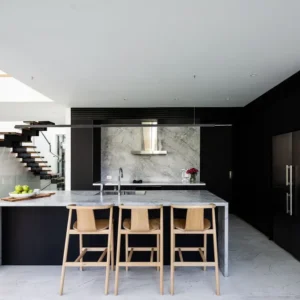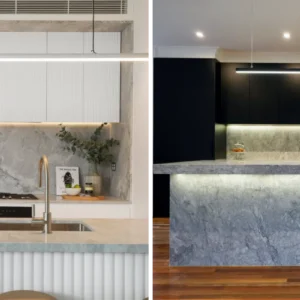Our stone slabs are available in a variety of material, colours, shapes, and sizes. They will add character to any indoor or outdoor space, whether they are used to build a benchtop, feature wall, bathroom or a kitchen. Stone Slabs are the gold standard for both durability and character among all the benchtop materials available. The eternal beauty of natural stone slabs might be used to give your indoor or outdoor space a new lease on life. At Avant Stone we have one of the finest collection of stone slabs in Sydney
WHAT ARE MARBLE SLABS
Marble is a metamorphic rock that starts life as a granular limestone, that is recrystallized over time through heat and pressure. Marble can take on a range of textures and hues. The characteristic swirls and veins present in Marble slabs are usually due to various mineral such as sand, clay or silt which were originally present as grains or layers in the limestone.
Read More
As a premium Marble supplier in Sydney, Avant Stone sources unique range of Marble slabs from the remote quarries and manufacturers around the globe. With a focus on quality and exclusivity, our Marble features patterns unique to each piece, allowing our clients to find a product that makes their next project truly bespoke.
From the shimmering aura of the Taj Mahal to the Duomo in Florence, there is a reason why Marble slabs are one of the world’s most revered natural materials used for over 5,000 years.
Marble is a natural statement piece that can be used in a variety of applications due to its beautiful, smooth texture and timeless lustre. Calacatta Viola Marble Slabs can be used as an exquisite coffee table, or an eye-catching marble benchtops.
Marble will add a touch of elegance and luxury to your home.
We, as marble suppliers in Sydney, provide marble slabs in a variety of colours and textures.
Marble slabs are ideal for use as countertops, tables, or inserts in other types of furniture. They are one-of-a-kind and exquisite. It is possible to have each marble tile precisely cut to the exact size you require, while leaving the natural veins on the top of the countertop unchanged.
WHAT ARE MARBLE SLABS
Marble is a metamorphic rock that starts life as a granular limestone, that is recrystallized over time through heat and pressure. Marble can take on a range of textures and hues. The characteristic swirls and veins present in Marble slabs are usually due to various mineral such as sand, clay or silt which were originally present as grains or layers in the limestone.
Read More
As a premium Marble supplier in Sydney, Avant Stone sources unique range of Marble slabs from the remote quarries and manufacturers around the globe. With a focus on quality and exclusivity, our Marble features patterns unique to each piece, allowing our clients to find a product that makes their next project truly bespoke.
From the shimmering aura of the Taj Mahal to the Duomo in Florence, there is a reason why Marble slabs are one of the world’s most revered natural materials used for over 5,000 years.
Marble is a natural statement piece that can be used in a variety of applications due to its beautiful, smooth texture and timeless lustre. Marble Slabs can be used as an exquisite coffee table, or an eye-catching marble benchtops.
Marble will add a touch of elegance and luxury to your home.
We, as marble suppliers in Sydney, provide marble slabs in a variety of colours and textures.
Marble slabs are ideal for use as countertops, tables, or inserts in other types of furniture. They are one-of-a-kind and exquisite. It is possible to have each marble tile precisely cut to the exact size you require, while leaving the natural veins on the top of the countertop unchanged.
WHAT ARE GRANITE SLABS
Granite is an igneous stone known for its majestic appearance and its superior versatility. Our range of Granite is carefully selected to offer a colour palette suited to the modern Australian architectural space.
Granite is an affordable and practical luxury – the stone is scratch & chemical resistant along with being extremely durable. Whether it’s for the kitchen, bathroom or your commercial project, Granite will ensure a unique and unmatched look in whichever space it is utilised in.
Read More
Granite is a natural stone that possesses remarkable durability, strength, heat resistance, and chemical resistance, which allows it to be used in a variety of situations due to its versatility.
They are durable enough to be used in the kitchen as granite benchtops or on the patio. This adaptable countertop is available in a variety of colours and is simple to clean and maintain, so you won’t have to worry about spills.
This type of surface combines the natural beauty and rich textures of natural stone with the simplicity of care and upkeep that is comparable to other domestic surfaces.
Our granite slabs bring the beauty and benefits of granite to outdoor kitchens and any indoor setting that welcome an upscale touch.
Granite suppliers in Sydney design and craft it with precision with cutting-edge technology, these granite slabs are available in a wide range of styles, including smooth and textured versions, different finishes, and almost unlimited combinations.

Looking for the ideal stone care products?
Stain-Proof Premium Impregnating Sealer is an impregnating, invisible and breathable sealer that provides premium long term protection for natural stones, tiles, pavers, concrete, brick and grout from water and oil based stains and damage caused by water and dissolved salts. Treated indoor and outdoor surfaces become easier to clean and keep looking good for longer.
Looking for the ideal stone care products?
Stain-Proof Premium Impregnating Sealer is an impregnating, invisible and breathable sealer that provides premium long term protection for natural stones, tiles, pavers, concrete, brick and grout from water and oil based stains and damage caused by water and dissolved salts. Treated indoor and outdoor surfaces become easier to clean and keep looking good for longer.

AVANT STONE
Avant Stone brings together 20 years of stone industry experience to provide you with a range of globally sourced stone slabs including Marble slabs, Granite slabs and Quartzite Slabs. We aim provide you quality service and distinctive stone products for your home or your commercial space.Avant Stone is the premier Stone Supplier of Granite, Quartzite and Marble slabs in Sydney
Our showroom is located centrally in Greenacre, a mere 20 minutes from Sydney & Parramatta CBD. We maintain a range of high quality Granite Quartzite and Marble slabs by sourcing and inspecting directly from the quarry.Our mission is to be the primary location for architects, designers and homeowners looking to buy Granite, Quartzite or Marble slabs in Sydney.
Our constantly evolving range of natural stone sets Avant Stone apart as a unique stone supplier. Selections are made based on the individuality of each stone, as well as our knowledge of what our clients want to achieve with their projects. Selecting stone is like buying a diamond, with an emphasis on evaluating the colour, texture and vein structure of the individual stone.
Give us a call: 0298170037 Or Email us at: [email protected]
Enquire
All types of natural stone slabs stocked by Avant Stone can be utilized for Stone kitchen benchtops, some stone types are more suitable than others, feel free to discuss your kitchen design and kitchen use with a member of the Avant Stone team to find your perfect stone.
Marble is formed when heat and pressure is applied to Limestone. The unique natural properties of Marble allow it to be polished to a high gloss which gives the impression of depth. Polished Marble is the more traditionally utilized form giving an opulent finish to your bathroom or living area. Marble is also available in a honed (similar to matte) finish, which is recommended for kitchen benchtop as the honed finish masks etching which can occur in marble when exposed to acidic liquids.
Granite is a robust, strong and durable natural stone which has been used in historic European architecture which remains standing to this date. Granite’s igneous rock structure allows it to be heat, scratch and stain resistant, which lends itself to it being a popular kitchen benchtop choice. Granite has a unique colour palette that is not available.
Quartzite benchtops exceeds granite in strength and durability while often offering the visually stunning appeal of marble.
Marble is a porous natural stone, and as such requires the use of a sealer and a little extra care than granite and quartzite. The trade off with marble however is the visually stunning and unique stone pieces that are not easy to find other stone types.
We are able to provide samples of a large number of our stone products to architects, builders and designers. For homeowners looking purchase a new stone benchtop, we recommend visiting our premises to see the eye-catching beauty of a large stone slab.
Natural stone needs to be sealed upon installation, and annually after that. Sealing requirements vary depending on the stone sealer used, please speak to a member of our team to find out more.
Natural stone can be utilised outside, however we advise like any surface exposed to the elements there will be weathering over time. Often this weathering process will only add to the beauty and presence of your stone installation, as evidenced by the Taj Mahel or the Duomo in Florence.
Book-matching is the process of installing slabs of the same block right next to each other to match veins or other features of the stone to create a stunning mirror image.
Natural stone has a variety of uses from indoor surfaces such as bathroom surfaces, feature walls, splash backs, and stone flooring, or alternatively for outdoor surfaces such as paving, pool coping or as feature walls in your garden area.
Yes, Avant Stone is able to provide natural stone tiles that match various colours through an indent order, which has a shipping time of approximately 8-12 weeks. If you’re interested in ordering tiles in any colour, please enquire through the contact us section.







